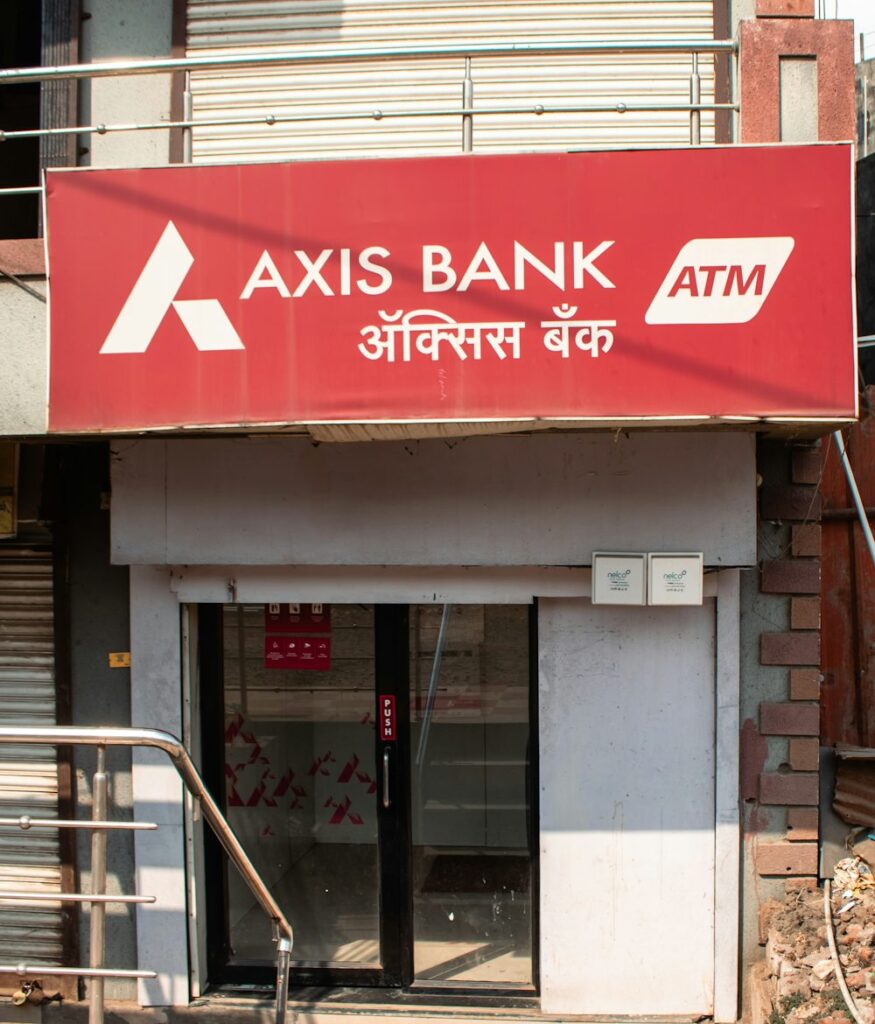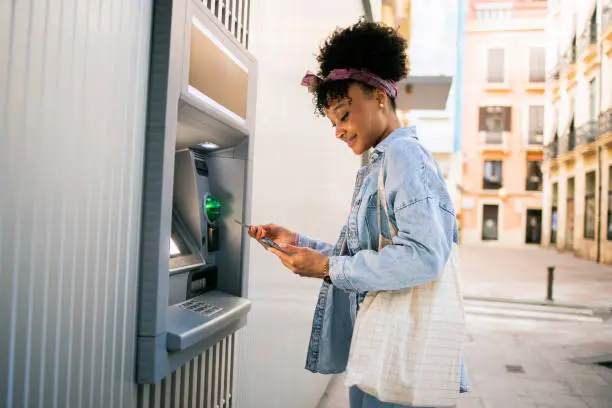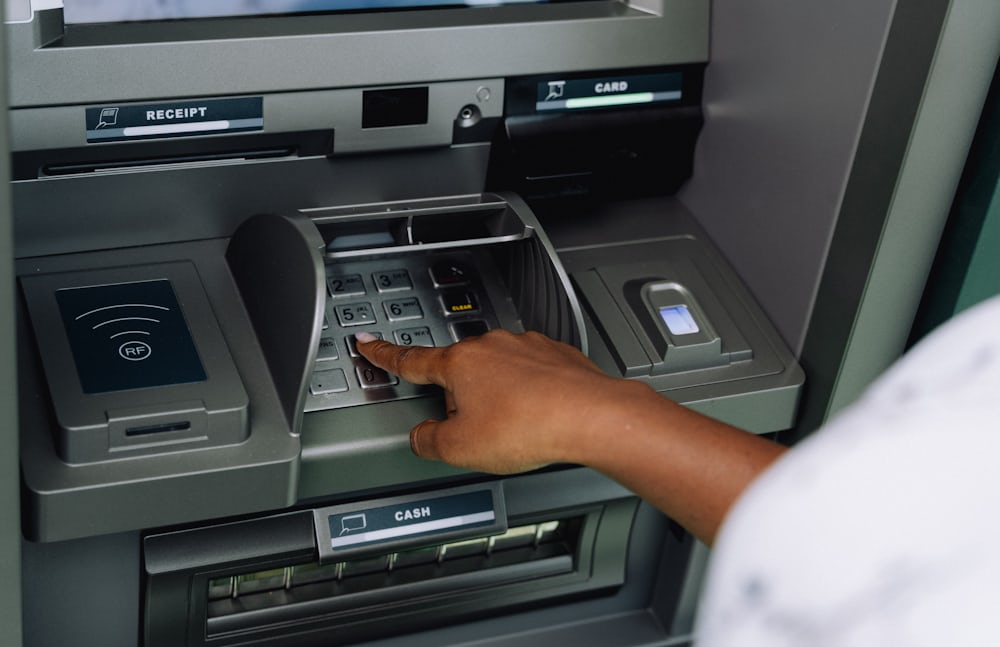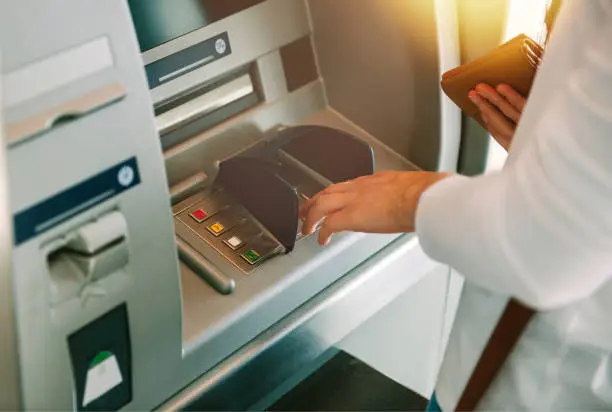How does a ATM Machine work?

The Physics behind ATM machine – Explanation
So here you are walking down the street, your wallet is a bit light, and you come across an ATM. How does a ATM Machine work? You put in your card, enter your PIN and out comes cash. How does that work? What is happening in that black box of fun? Is it just some code and wires? Not quite, there is actually physics involved – electromagnetism and mechanics. So here is the best i can explain how an ATM works, in the simplest of terms and accessible to everyone using physics.
What’s an ATM?
An ATM, also known as an Automated Teller Machine, provides a self-service banking experience for anyone to withdraw cash, check account balances and in some cases deposit cash or checks without a teller present. How does a ATM Machine work? So while it might appear simple and easy, ATMs are a complex piece of hardware, software and physics that work together.

1. The physical input of putting in the card
When you place your debit card or credit card into the ATM you are not simply putting a rectangle piece of plastic into a box. Inside the ATM, there is a small motorized roller that pulls the card in. In this situation, we are dealing with mechanical physics- motion, friction and torque.
Torque and Motors:
In this card reader we have small electric motors to produce torque (rotary force) to open and hold onto the card to move it.
Friction:
The rubber rollers hold onto your card with the right amount of friction to not damage it and move it.
Magnetism:
This is the next concept. As I have said before, your card has a magnetic stripe storing data about your accounts. The ATM has a magnetic read head – similar to what was in old cassette players – to read the magnetic field on the stripe. This is electromagnetic induction. The stripe generates a small electric signal, and the machine converts it back to data when it passes over the reader.
2. Identity Verification: The Keypad and PIN Entry
When you type in your PIN on a keypad, it uses way more than just a piece of plastic. The keypad uses a membrane switch, and is a type of switch that is directional with pressure and electric circuits.
When you press a button you close a circuit underneath.
That sends an electrical signal that represents the number.
These signals are encrypted and sent to the bank’s server.
While many modern ATMs are using capacitive touchscreens, which sense the electrical charge of your fingers – discuss that relies on electric fields and conductance.

3. Secure Communication: Data Transmission and Electromagnetic waves
Now we come to the point that your PIN and card data needs to be securely transited to your bank. This is where electromagnetic physics comes into play again!
ATMs commonly utilize fiber optics, Wi-Fi, or connections of 4G to send the data in the first instance.
These signals are in fact light waves or radio waves, both of which are electromagnetic waves.
Your data is encrypted and transmitted at almost the speed of light.
This communication occurs almost instantaneously because of decades of research in the field of physics which are based on how energy and information propagate through space.
4. Processing and Decisions: The Software Brain
The ATM has a very small computer inside of it, just like your desktop PC at home. The software on that ATM runs a special operating system to facilitate dialogue with bank servers. This is where binary logic and microelectronic processing reside.
The role that quantum physics has to play here is very remote but nonetheless quite important. The transistors in the CPU work because of quantum tunnelling and semiconductor physics dictating how electrons behave in very small spaces.
What you don’t see are that with each click, with each window you see, is a cacophony of electrons moving, flipping states on and off, and telling the machine what to do next!
5. Cash Dispensing: A Mechanical Marvel
Now the fun part – getting the cash. The cash dispenser is basically a small factory of gears, sensors, and motors.
How does a ATM Machine work?
A stepper motor rotates a set of gears that drive rubber belts.
The rubber belts pick up one note at a time using suction, or it might be rollers.
There are sensors to check that there is only one note picked – these use infrared light, or ultrasonic sensors (once again, physics).
Once there is a jam, or it picks two notes, the machine stops, reverses, and retries.
The required force for moving the cash, detecting errors, and delivering it to you, is based upon physics principles of mechanical and electrical force and things like gravity – once released, the notes travels downwards into the cash tray.
How does a ATM Machine work?
6. The Screen and Interaction:
The interaction with the ATM takes place on a screen, which can either be an LCD or a touchscreen. Behind the screen is a matrix of liquid crystals or light-emitting diodes, using electrical impulses to illuminate the pixels via the light polarizing principle.
The color of each pixel is changed by adjusting the orientation of the liquid crystal based on electric current applied to it.
The light travels through a series of polarizing filters – so here we refer back to optics as well as wave physics.
This beautiful collection of images and animations is really just pure physics – electrical charges, which manipulate light.
7. Hooking It All Up: Electricity and Circuitry / Electrical Power
All the components of an ATM rely on power. The ATM unit is connected to the electricity grid and often has a battery as backup power, all designed to keep power on all the time within the ATM. Inside the ATM there are voltage regulators and transformers along with device fuses and circuit breakers that continuously supply steady current to all the electronic devices.
How does a ATM Machine work?
The mathematical equation that gets us to the relationship of voltage and current used in an ATM is Ohm’s Law (V = I * R) which states voltage (V) is equal to current (I) x resistance (R).
Capacitors and inductors in ATM’s help us filter out noise from power lines.
There are also safety designs for motors and electrical current to stop the operation of the ATM in the case of overloaded circuits due to electrical faults. Hence, we have yet another example of the usefulness of electromagnetic theory.

In Conclusion: Physics Makes the Magic Work
How does a ATM Machine work?
Let’s summarize the physics tools/techniques we applied while explaining operation of an ATM.
Mechanics- keys provide mechanical intake by accepting cards and cash transports movement of bank notes.
Electromagnetism- cards read by magnetic stripe and data sent to a card issuer and bank headquarters.
Pressure and circuitry- keypads and buttons have constant pressure from elastomers and circuitry.
Light and optics- use to illuminate and screen sensors.
Semiconductor physics- Data processing stores and records data continuously.
Wave physics- Radio waves transmit data between the ATM and card issuer.
Now you can understand How does a ATM Machine work? Lastly, although we see an ATM as a metal box, inside is an excellent example of how physics influences each aspect of our lives in the ATM. The design of buttons, the functioning of the ATM screen, and, the powers of currency from metal cans seem to operate on their own, but they all arise from different schemes of physics principles.
FAQ
Q1: What is the main science behind how an ATM works?
A: The ATM works on the basic sciences of mechanical physics, electrical physics and electromagnetic physics. The ATM has motors to move things, magnetic fields to read your card, and circuits to process information and display it.
Q2: How does the ATM read my card?
A: Your card has a magnetic stripe that has recorded information. To read the data, the ATM employs a sort of roller with a magnetic read head that recognizes changes in the magnetic field of the stripe as it passes under the read head. This principle is known as electromagnetic induction.
Q3: How does the machine know if I entered the correct PIN?
A: When you entered your PIN, an electrical circuit was under every key and registered your number. The number was then sent using encrypted data via electromagnetic signals to your bank server and confirmed your data.
Q4: What happens if the machine tries to give two bank notes at once?
A: The cash dispensing system has sensors (usually infrared or ultrasonic) to detect multiple notes. If it detects an error, it will stop, clear the error and try again by using mechanical means.
Q5: How does the machine count the cash accurately?
A: The ATM uses stepper motors and precise timing to pick one note at a time. Optical and motion sensors help count and verify each note before dispensing.
Q6: What happens during a power outage?
A: Many ATMs have battery backups (UPS systems). If the power fails, the machine shuts down safely, often saving your transaction state and locking the cash box for security.

Good information sir
Pingback: Indus Valley Civilization - nearlibrary.com